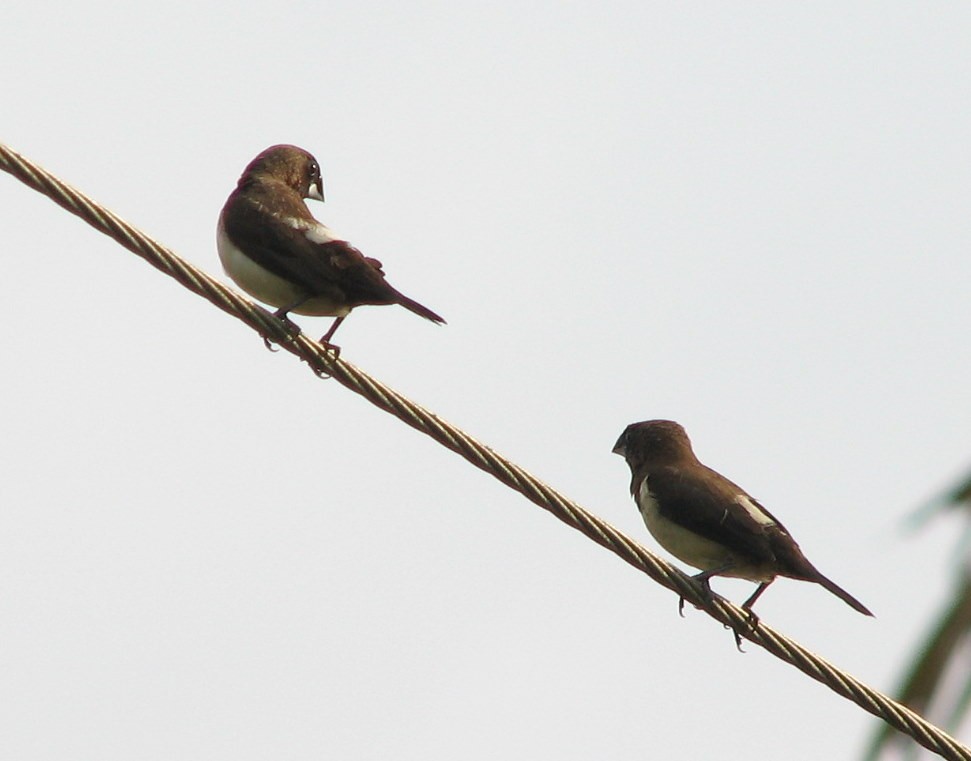White-rumped Munia
A species of Mannikins, Also known as Striated Mannikin Scientific name : Lonchura striata Genus : Mannikins
White-rumped Munia, A species of Mannikins
Also known as:
Striated Mannikin
Botanical name: Lonchura striata
Genus: Mannikins
Content
Description People often ask General Info
 Photo By അപ്പു , used under CC-BY-SA-2.5 /Cropped and compressed from original
Photo By അപ്പു , used under CC-BY-SA-2.5 /Cropped and compressed from original Description
The white-rumped munia is approximately 10 to 11 cm in length, with a stubby grey bill and a long black pointed tail. The adults are brown above and on the breast, and lighter below; the rump is white. There is some variation between the subspecies, but the sexes are almost impossible to distinguish in all subspecies; males have a more bulky head and bill. 
Size
12 cm
Colors
Brown
Black
Gray
White
Life Expectancy
4-8 years
Nest Placement
Building
Feeding Habits
White-rumped Munia primarily feeds on grass seeds, including rice and seeds from various grasses, bamboo, and sedge. They forage on casuarina cones and consume filamentous green algae from shallow water, showing an adaptation to diverse seed-based diets.
Habitat
White-rumped Munia predominantly inhabits diverse landscapes from dry open grasslands to shrubby areas and forest edges. These birds are also comfortable in more manipulated environments such as weedy clearings, thickets, agricultural plantations, and village gardens. They can be found around clearings with bushes and are a common sight in rice fields. Geographically, white-rumped Munia is mostly native to lowland regions but seasonally migrates to higher altitudes, frequenting elevations up to 2500 meters, particularly in Asian mountain ranges.
Dite type
Granivorous
People often ask
General Info
Feeding Habits
Bird food type
Distribution Area
The white-rumped munia is a common resident breeder ranging from the Indian subcontinent to southern China east to Taiwan, and through Southeast Asia south to Sumatra; it frequents open woodland, grassland and scrub, and is well able to adapt to agricultural land use. It is a gregarious bird which feeds mainly on seeds, moving through the undergrowth in groups and sometimes accompanying other birds such as puff-throated babblers (Pellorneum ruficeps). The nest is a large domed grass structure in a tree, bush or grass into which three to eight white eggs are laid. They are also known to use abandoned nests of Baya weaver. They are often found near water and have been observed feeding on algae. It has been suggested that they obtain protein from their diet of algae often in the species Spirogyra, which grows in paddy fields. It is a common and widespread bird across its large range, and is thus not considered a threatened species by the IUCN. In fact, it may locally become a nuisance pest of millets and similar grains. Even the Nicobar Islands subspecies with its limited range seems to be able to cope well with human settlement. As it is a drab-coloured and rather reclusive bird inhabiting dense undergrowth, the white-rumped munia is not necessarily conspicuous even where it occurs in considerable numbers. 
Species Status
Not globally threatened.
Scientific Classification
Phylum
Chordates Class
Birds Order
Perching birds Family
Estrildid finches Genus
Mannikins Species
White-rumped Munia